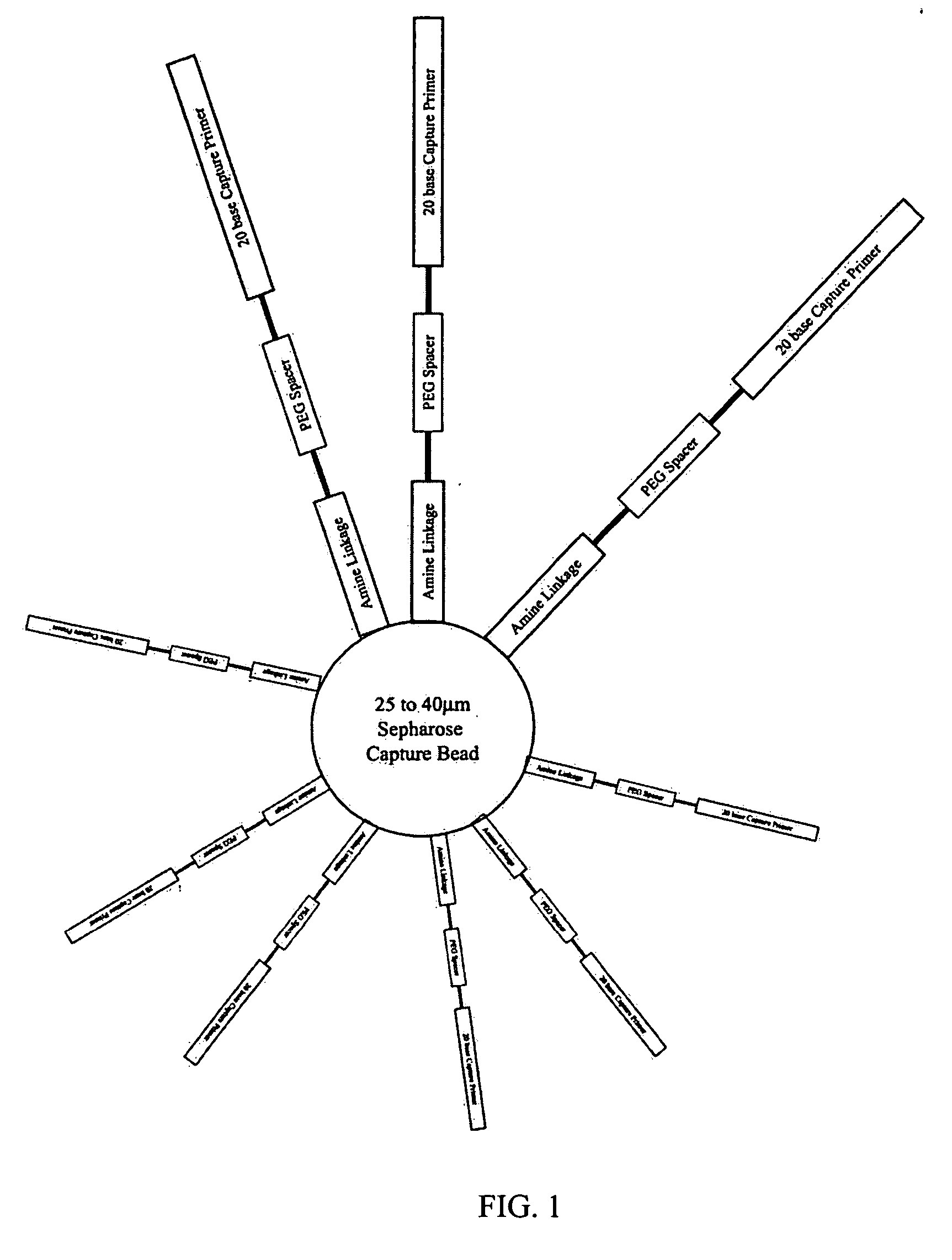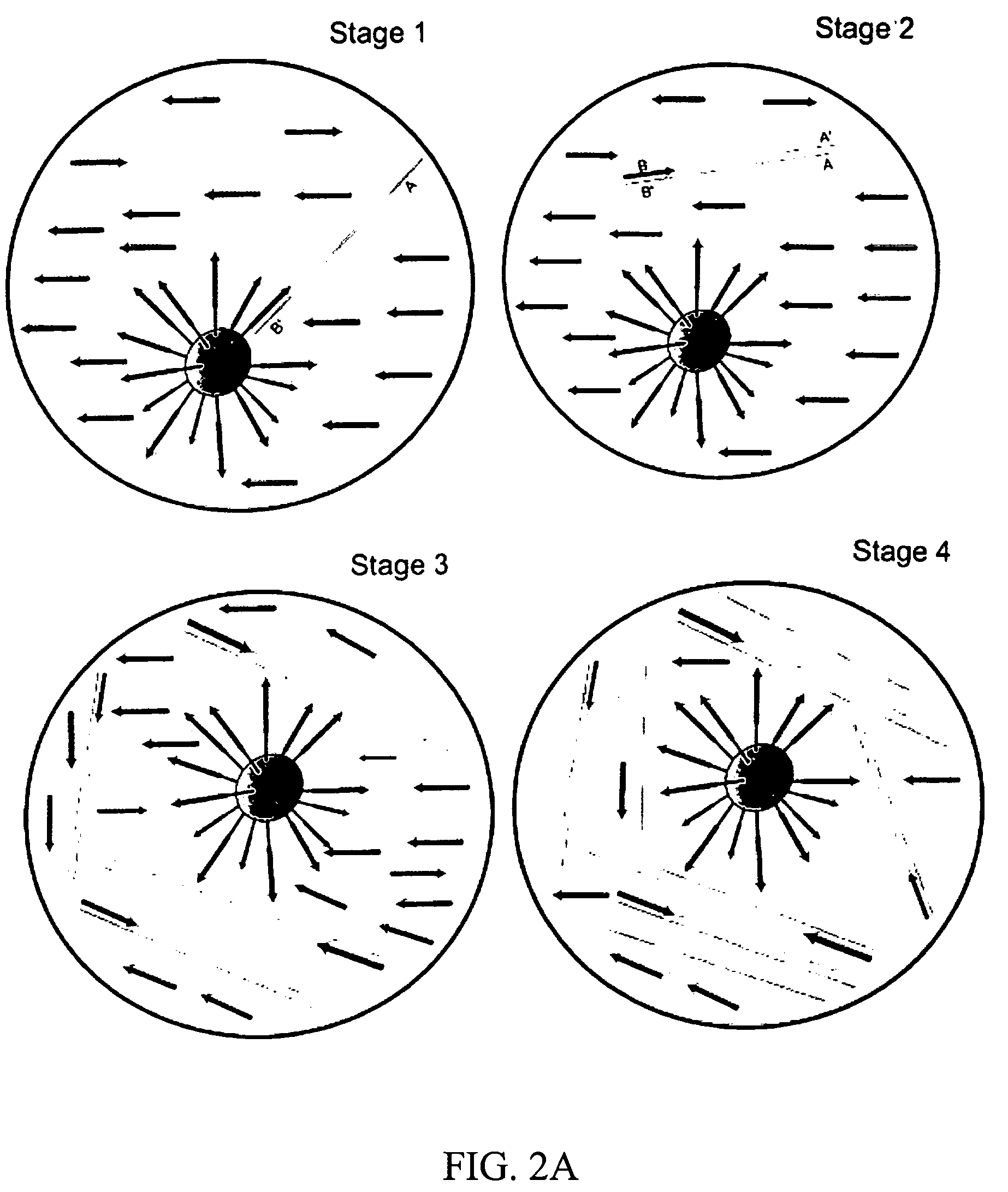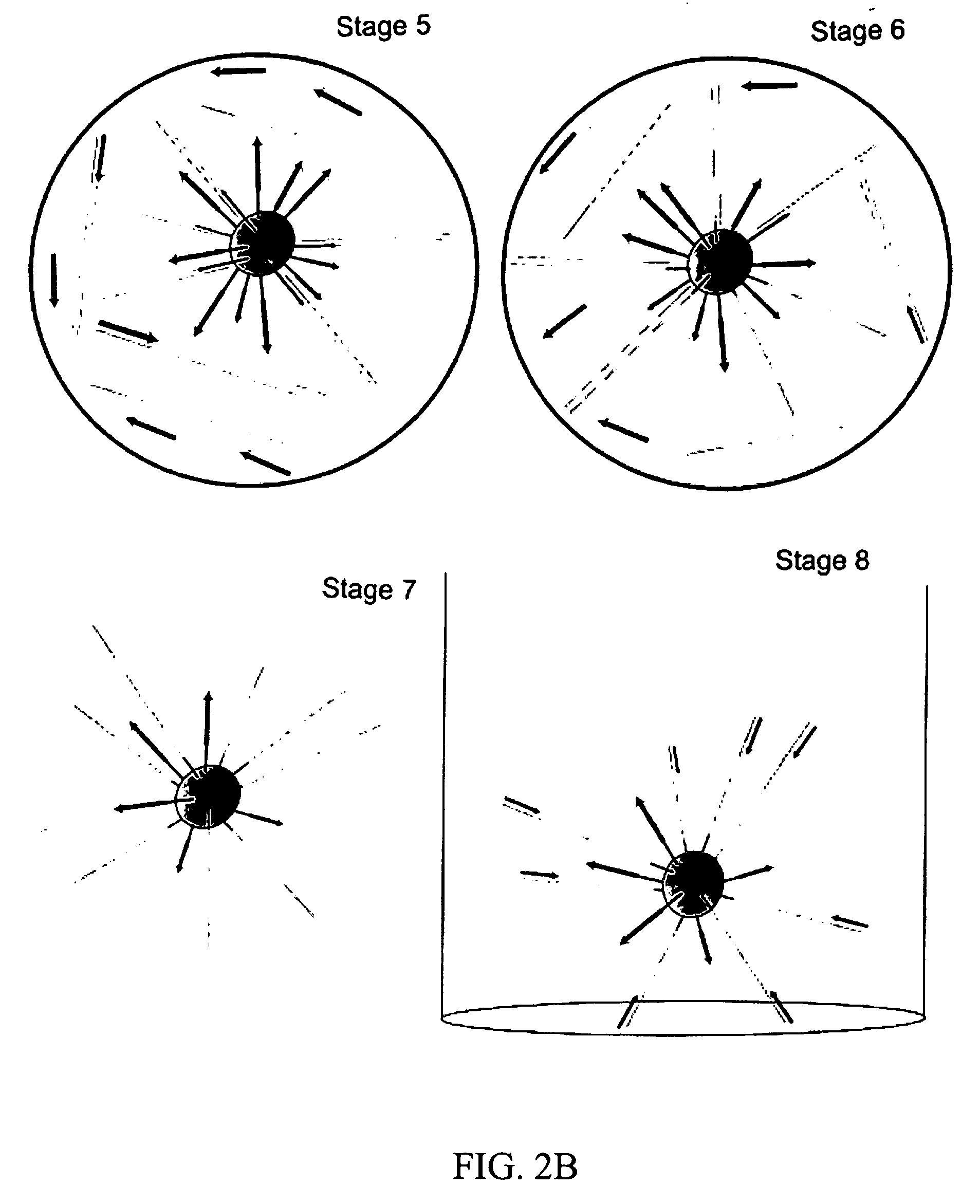Bead emulsion nucleic acid amplification
a technology of nucleic acid amplification and beads, which is applied in the field of beads emulsion nucleic acid amplification, can solve the problems of limited starting material, limited genomic sequencing utility, and inability to amplify a genome in a representative fashion, and achieves the effects of reducing the number of beads
- Summary
- Abstract
- Description
- Claims
- Application Information
AI Technical Summary
Benefits of technology
Problems solved by technology
Method used
Image
Examples
example 1
Binding Nucleic Acid Template to Capture Beads
[0087] This example describes preparation of a population of beads that preferably have only one unique nucleic acid template attached thereto. Successful clonal amplification depends on the delivery of a controlled number of template species (0.5 to 1) to each bead. Delivery of excess species can result in PCR amplification of a mixed template population, preventing generation of meaningful sequence data while a deficiency of species will result in fewer wells containing template for sequencing. This can reduce the extent of genome coverage provided by the sequencing phase. As a result, it is preferred that the template concentration be accurately determined through replicated quantitation, and that the binding protocol be followed as outlined below.
[0088] Template Quality Control
[0089] The success of the Emulsion PCR reaction is related to the quality of the template species. Regardless of the care and detail paid to the amplificati...
example 2
Emulsification
[0124] This example describes how to create a heat-stable water-in-oil emulsion containing about 3,000 PCR microreactors per microliter. Outlined below is a protocol for preparing the emulsion.
[0125] 1. 200 μl of PCR solution was added to the 600,000 beads (both components from Example 1).
[0126] 2. The solution was pipetted up and down several times to resuspend the beads.
[0127] 3. The PCR-bead mixture was allowed to incubate at room temperature for 2 minutes to equilibrate the beads with PCR solution.
[0128] 4. 400 μl of Emulsion Oil was added to a UV-irradiated 2 ml microfuge tube.
[0129] 5. An “amplicon-free”¼″ stir magnetic stir bar was added to the tube of Emulsion Oil.
[0130] An amplicon-free stir bar was prepared as follows. A large stir bar was used to hold a ¼″ stir bar. The stir bar was then: [0131] Washed with DNA-Off (drip or spray); [0132] Rinsed with picopure water; [0133] Dried with a Kimwipe edge; and [0134] UV irradiated for 5 minutes.
[0135] 6. Th...
example 3
Amplification
[0145] This example describes amplification of the template DNA in the bead—emulsion mixture. According to this protocol of the invention, the DNA amplification phase of the processtakes 3 to 4 hours. After the amplification is complete, the emulsion may be left on the thermocycler for up to 12 hours before beginning the process of isolating the beads. PCR thermocycling was performed by placing 50 to 100 μl of the emulsified reaction mixture into individual PCR reaction chambers (i.e., PCR tubes). PCR was performed as follows:
[0146] 1. The emulsion was transferred in 50-100 μL amounts into approximately 10 separate PCR tubes or a 96-well plate using a single pipette tip. For this step, the water-in-oil emulsion was highly viscous.
[0147] 2. The plate was sealed, or the PCR tube lids were closed, and the containers were placed into in a MJ thermocycler with or without a 96-well plate adaptor.
[0148] 3. The PCR thermocycler was programmed to run the following program: [...
PUM
| Property | Measurement | Unit |
|---|---|---|
| Temperature | aaaaa | aaaaa |
| Temperature | aaaaa | aaaaa |
| Diameter | aaaaa | aaaaa |
Abstract
Description
Claims
Application Information
 Login to View More
Login to View More - R&D
- Intellectual Property
- Life Sciences
- Materials
- Tech Scout
- Unparalleled Data Quality
- Higher Quality Content
- 60% Fewer Hallucinations
Browse by: Latest US Patents, China's latest patents, Technical Efficacy Thesaurus, Application Domain, Technology Topic, Popular Technical Reports.
© 2025 PatSnap. All rights reserved.Legal|Privacy policy|Modern Slavery Act Transparency Statement|Sitemap|About US| Contact US: help@patsnap.com



